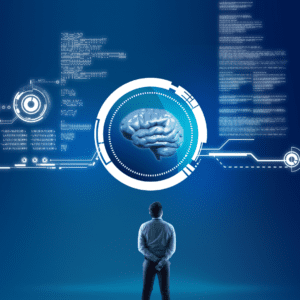AIカスタマーサービスチャットボットを構築する必要があるとしましょう。たとえあなたのモデルが特定のトレーニングデータセットでファインチューニングされていても、過去の会話や顧客のCRM、ドキュメント、またはチケッティングシステムに保存された製品情報などのデータにアクセスできなければ、効果的ではありません。
このコンテキストデータを使用するには、LLMとの統合が必要です。これには、サードパーティのソースからのデータの取り込みと、データを効果的に使用するためのRAGとファインチューニングの選択が含まれます。
しかし、最良のアプローチは何でしょうか—ファインチューニングそれともRetrieval Augmented Generation (RAG)でしょうか?この記事では、それらの詳細な比較を提供します。

Retrieval Augmented Generation (RAG)
RAGは、外部データをオンデマンドで取得し、実行時にプロンプトにコンテキストを注入することで、LLMの精度を向上させます。このデータは、顧客ドキュメント、ウェブページ、CRMやGoogle Driveなどのサードパーティアプリケーションなど、さまざまなソースから取得できます。
RAGの主要コンポーネント
データの取り込みとストレージ:
- : 初期にすべての関連顧客データを取得します。最初にすべての関連顧客データをプルします。
- : バックグラウンドジョブを使用して、リアルタイムでデータを更新します。バックグラウンドジョブを使用して、データをリアルタイムで更新します。
- 埋め込みとストレージ: データをベクトルデータベースに保存して取得する。
プロンプトインジェクション:
- 実行時: ベクトルデータベースから関連するテキストチャンクを取得し、それを初期プロンプト/クエリに注入してLLMが最終応答を生成する。
ファインチューニング
ファインチューニングは、特定のタスクのパフォーマンスを向上させるために、ドメイン特化型データセットで事前トレーニングされたLLMをさらにトレーニングすることを含みます。例えば、AI営業エージェントを構築するために、セールスメールに基づいてモデルをファインチューニングすることです。
ファインチューニングの課題
- データ準備: クリーンで構造化されたトレーニングデータセットが必要です。
- 予測可能な結果より予測可能な結果を生み出しますが、時間がかかります。
RAGとファインチューニング: どちらを選ぶべきか?
RAGを使用するタイミング
- プロンプトにリアルタイムのコンテキストを注入します。
- 構造化されたトレーニングデータセットは不要です。
- 複数のデータソースから関連するコンテキストを取得します。
ファインチューニングを使用するタイミング
- トレーニングのための特定の、よく準備されたデータセットがある場合。
- 予測可能な結果を必要とするタスクの場合。
RAGの実装

データの取り込み
あなたのコンテキストデータがどこに存在するかを特定します。例えば、Notion、Google Drive、Slack、Salesforceなどです。既存のデータと更新を取り込むためのメカニズムを構築します。
データのチャンク化と埋め込み
ほとんどのコンテキストデータは非構造的です。チャンク化戦略を使用し、データをベクトル化して類似性検索のための埋め込みを生成します。
データの保存と取得
埋め込みをベクトルデータベースに保存して迅速に取得します。実行時に類似性検索を行い、関連するデータチャンクを取得してプロンプトに含めます。
セキュリティと権限
データ漏洩を防ぐために、安全な保存と適切な権限を確保します。セキュリティを強化するために、エンタープライズレベルのLLMを使用するか、各顧客のために別々のインスタンスを展開することを検討してください。
ファインチューニングプロセス

データの取り込みと準備
外部アプリケーションからデータを取り込み、クリーンなトレーニングデータセットを準備します。これらのデータセットを検証して、品質の高い入力を確保します。
トレーニングと検証
準備したデータセットでモデルを微調整します。デプロイ前にモデルが性能基準を満たしていることを検証します。
強化学習
ユーザーフィードバックを使用してモデルを継続的に改善するために、プロダクションで強化学習ループを実装します。
RAGとファインチューニングの両方は、外部データを統合してLLMの出力を向上させるために価値があります。堅牢なトレーニングデータセットを構築する複雑さを考えると、一般的にRAGから始める方が有益です。しかし、多くの場合、両方のアプローチを組み合わせることが不可欠になることがあります。
で NextBrain AI、最新のAI技術を使用して、技術的な実装に伴う複雑さなしに、正確なデータ分析と実用的なビジネスインサイトを提供します。 今日デモのスケジュールを設定してください 私たちのソリューションがどのように機能するかを直接体験するために。


 +34 910 054 348
+34 910 054 348 +44 (0) 7903 493 317
+44 (0) 7903 493 317